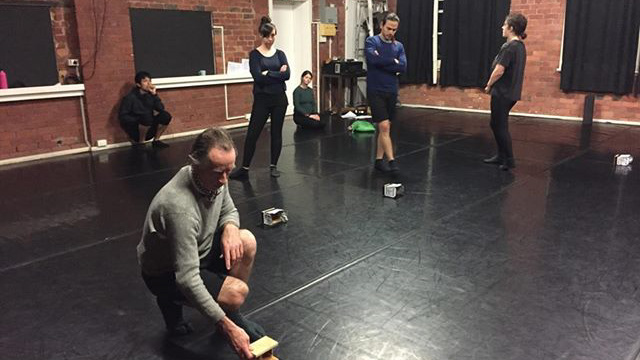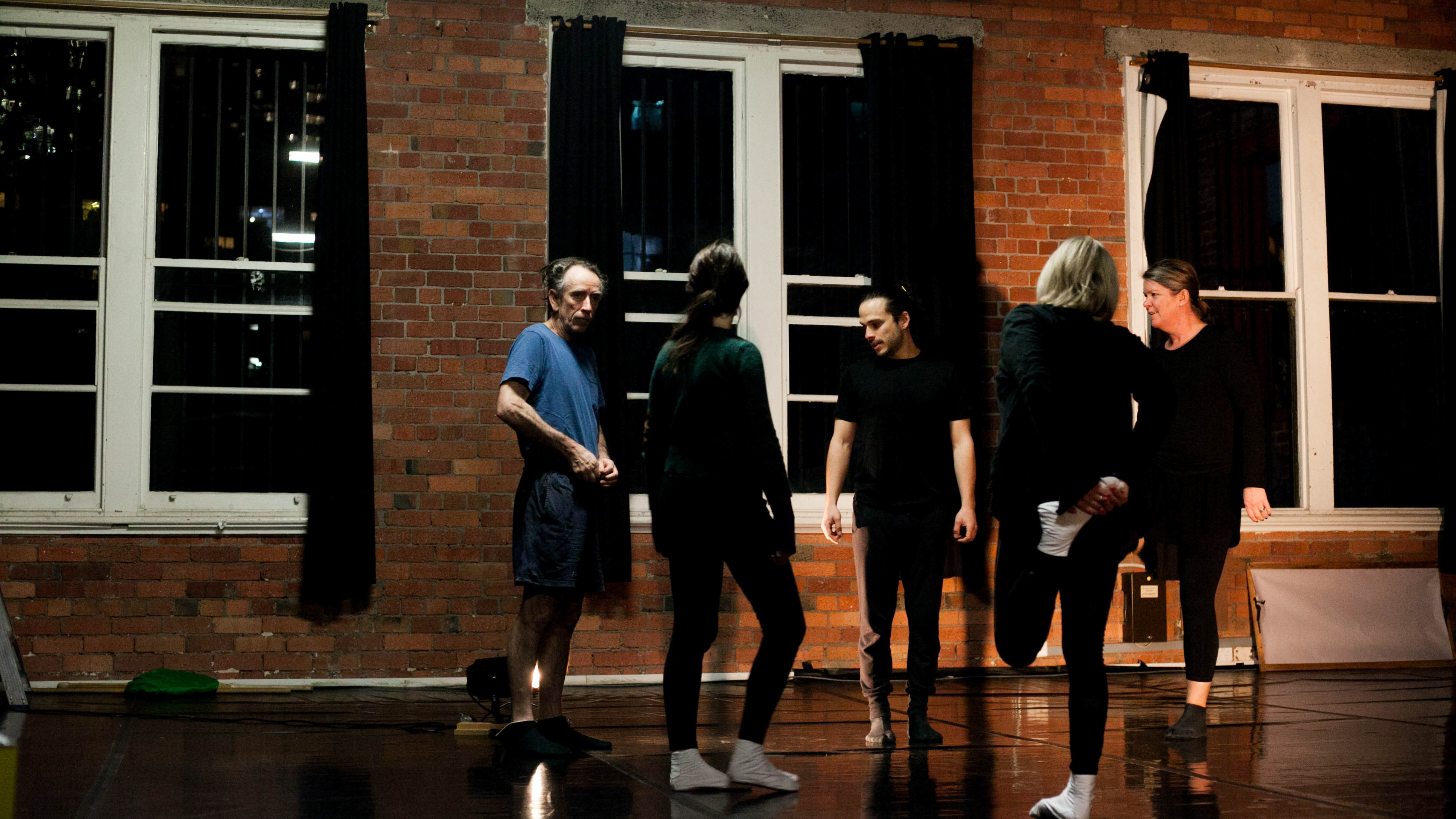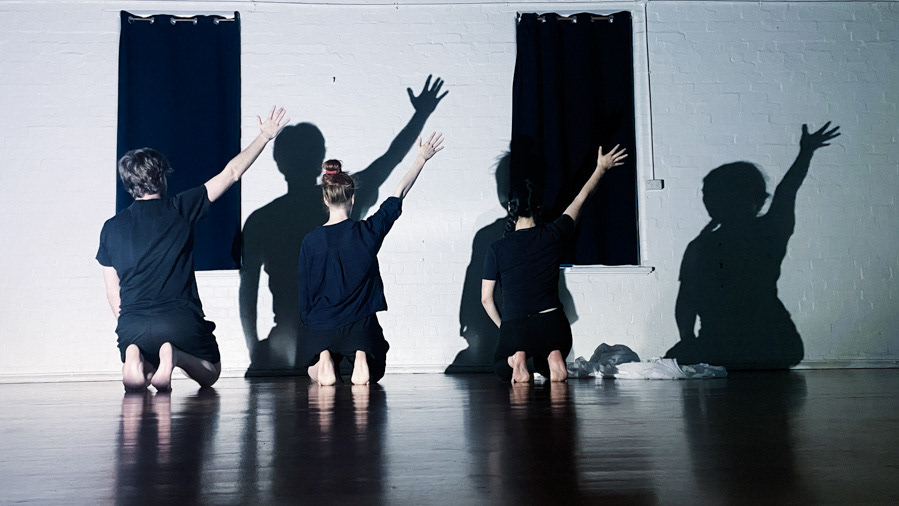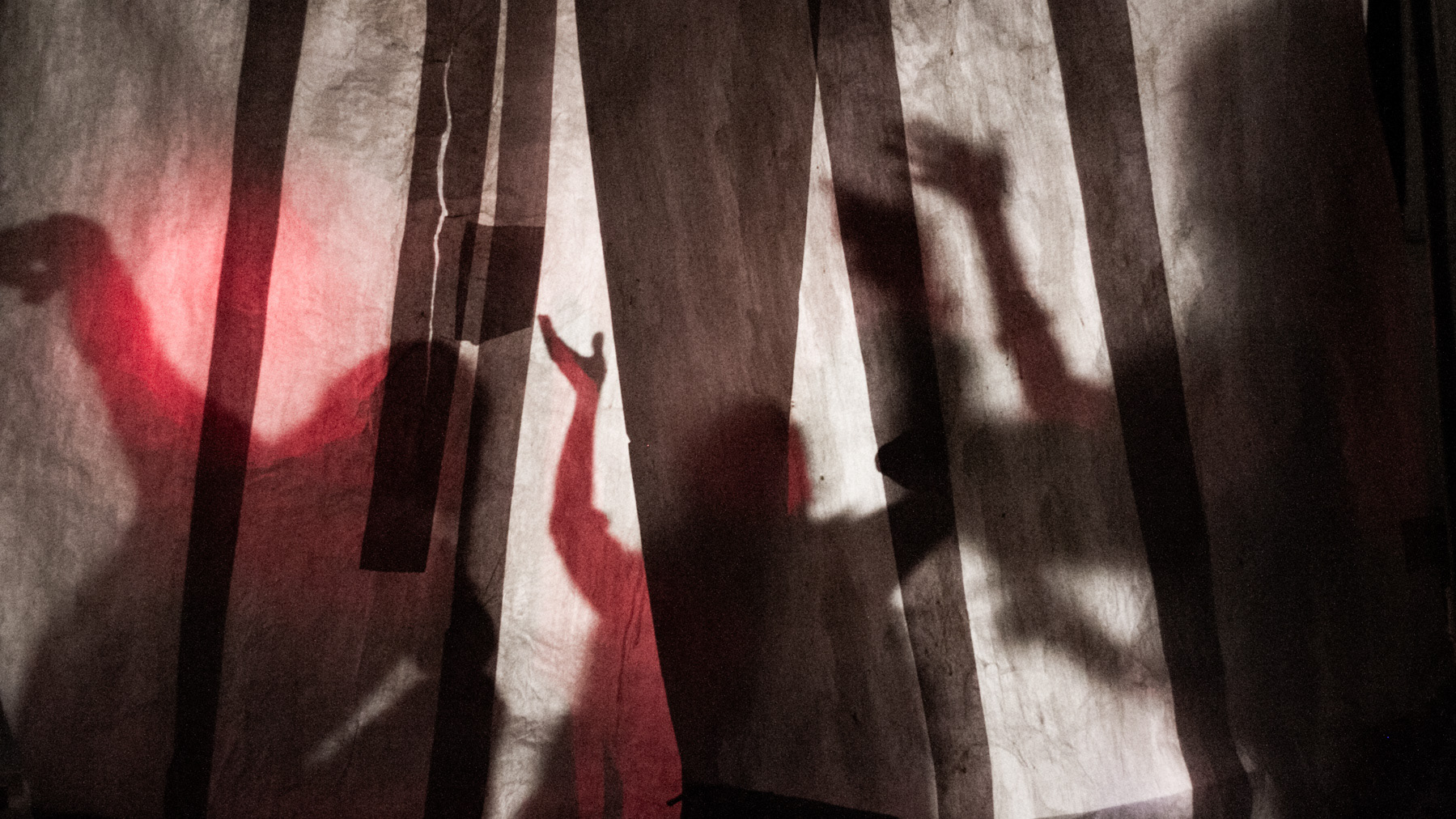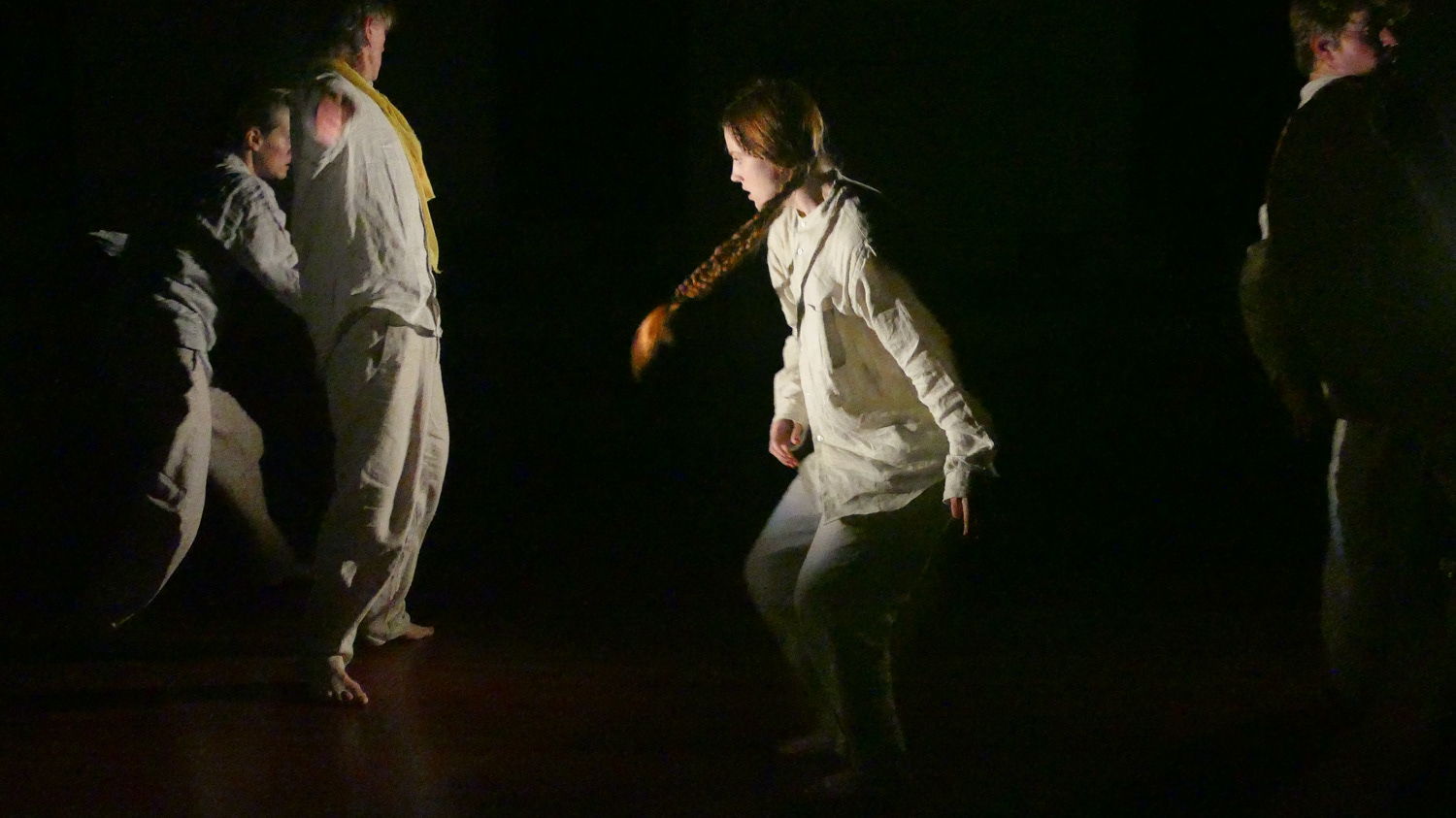The Statues exercise is, as the name suggests, an exercise that explores expression in stillness.

Athlete Wrestling with Python by Frederic, Lord Leighton, 1888-1891. Photo: Matthew Crosby
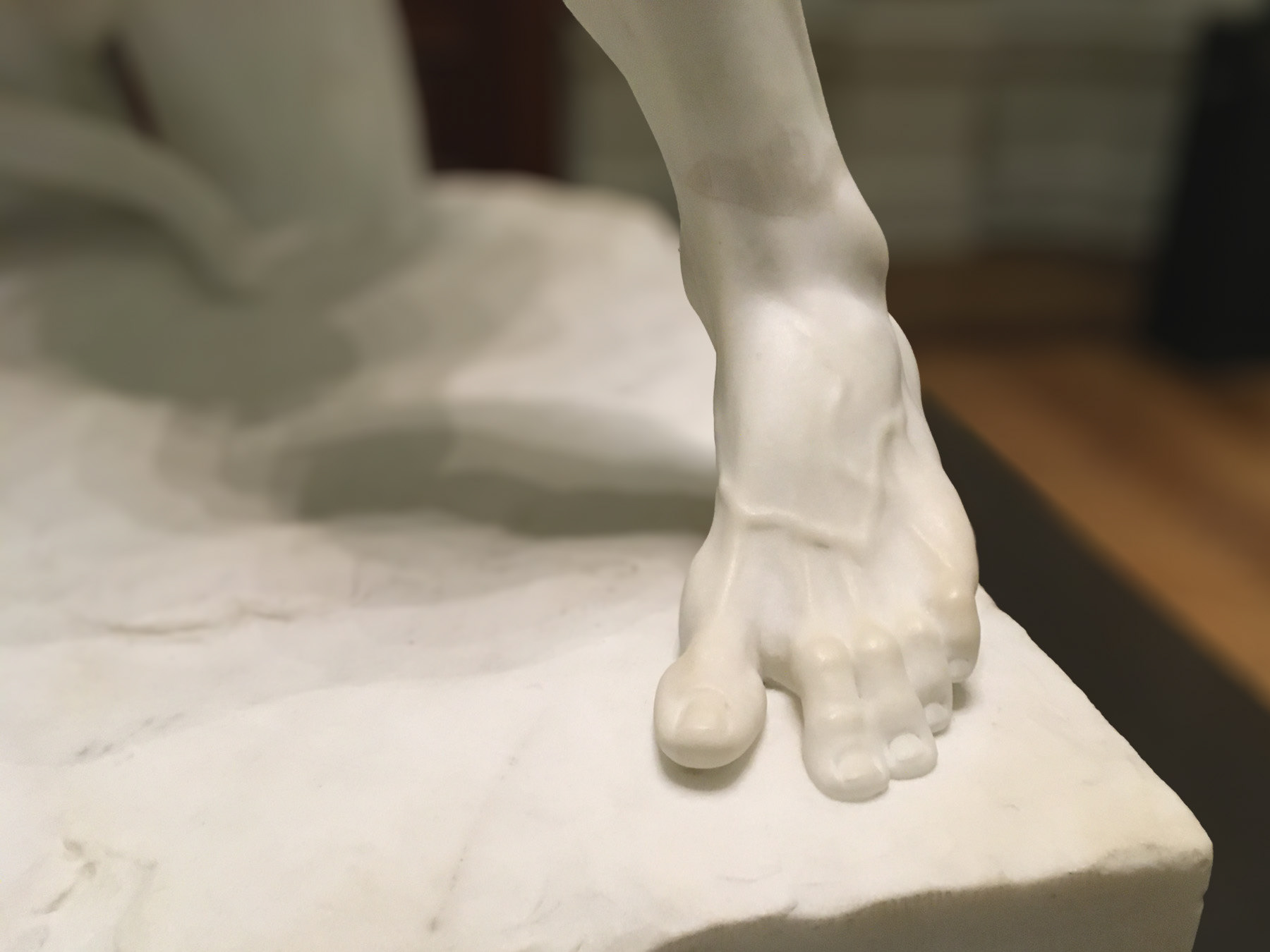
Athlete Wrestling with Python by Frederic, Lord Leighton, 1888-1891; detail: Photo: Matthew Crosby
If you could imagine running the four-hundred metres just like Kathy Freeman at the Sydney Olympics, arriving at the finish line, standing still speaking classical text, then you may understand something of the sense of the exercise. For the statue must speak from the energy the journey creates. Suzuki Tadashi describes the artist who removes chips from a stone block to reveal the statue’s form and says that for the artist to achieve this, they must envisage the statue before they commence. That is to say that each statue is based on the seed of an idea. In the exercise, the actor moves from squat to statue so quickly that the audience might not see the movement. The actor ‘catches’ their aite[1] in complete stillness. They stand on their toes. The pose renders the seed of their thought which emanates from the centre to all extremities of the body. Like any good sculpture, the overall idea of the artwork can be understood by looking at just one small part (synecdoche). It’s what viewers do; the eye of the beholder wanders between sections of an artwork. They might take steps forward or back, peer at one part or another, squint, raise glasses, read a programme note. If the artwork is successful, with each viewed section, the viewer will understand a cohesion in the parts.
Alana Hoggart, Eidann Glover, Lorna McLeod, Kathleen Doyle ; Statues practice 2019. Photo: Matthew Crosby
The description of the choreography of the Statues exercise is simple. Squat with your feet around shoulder width apart; on the cue, the actor rises quickly to a position standing on their toes. As they arrive, the actor catches a relation with the aite, their focal point. The pose expresses the centre’s idea. The actor stands completely still until they receive the cue to return down. Staying still on the toes is work that produces energy. The longer the duration, the more energy accrues, and the more control of body and breath is required. They must isolate the work from the expression. The effect for the audience should be that they see a still actor who appears to be moving.
Henry Moore: Large Reclining Figure, 1983 in Perry Green.
Suzuki often used the example of Rodin’s sculpture of hands or his The Thinker. In them Suzuki finds the signals of humanity. He demands that actors be not concerned with the small dramas of individuals, the soap opera of this boy meets this girl, but with the weighty concerns of the meaning of existence, the nature and cause of madness, the root of evil, the transcendence in exaltation, the corruption of humanity. Recently, in Eugenio Barba’s collection ‘A Dictionary of Theatre Anthropology’[2], I read Grotowski’s ideas concerning force and resistance in impulse, in which he explains that if an impulse moves in one direction it will have an opposite force. The conspiration of these two forces changes the actor’s body into a signal. He goes on to say that this ‘amplification’ of daily life creates energy of space and of time. Energy of space concerns movement, time concerns the compression of that movement beneath the skin: ‘the body is alive, it is doing something which is extremely precise, but the river is flowing in the realm of time’ (p. 237). This seems very close to Zeami and Komparu’s ideas on Jo Ha Kyu[3], that is, an arc of dynamic that ends in a suspended animation (ma[4]). Indeed, given Grotowski starts the examination of Barba with analysis of Noh, I wonder how much of their discussion on energy, movement and time is derived from Noh paradigms? The point is, that in the statues exercise, Suzuki has given us a very easy way to practice this concept of movement within stillness that displays immense energy or ‘amplification’ of the daily life of humanity into what Suzuki often describes not as character but as archetype. This discussion might lead down the track of applications because the moment one speaks of archetype, ideas of protagonist, antagonist, chorus, Greek tragedy, and Shakespeare’s kings and queens arises. We might consider therefore that the training is a method aimed at producing only that kind of theatre. I’ve heard it said that Suzuki’s training suits Suzuki’s theatre, which uses their home base open-air amphitheatre and employs styles that are at once epic, satirical, subversive and formal. That is obviously true.
The Clenched Hand, Modeled c. 1885; cast 1925, Artist/maker: Auguste Rodin, French, 1840 - 1917. Cast by the founder Alexis Rudier, Paris, 1874 - 1952, F1929-7-29.
Tessa Marie Luminati | Alana Hoggart | Joshinder Kaur Chaggar | Lorna McLeod, Statues practice 2021. Photo: Matthew Crosby
My view is that the training can be applied in a variety of ways, and personally, I’ve experimented with it in naturalistic settings (a problematic term given how far we’ve come from Ibsen), such as plays with other actors, who do not employ the training or in television work. In our experiments in The Thursday Group, I think we are yet to find exactly what ‘style’ we use in our theatre. Performing the statues exercise influenced by Grotowski’s impulse work, or as a platform from which to investigate Lev Vygotky’s concept of the inner thought completed by the social expression of the word, perhaps the term psychophysical might be an appropriate descriptor of The Thursday Group’s house-style and their approach to statues.
The above discussion veers into esoteric considerations that may or may not be relevant at this stage of our workshop. At base, the Statues exercise is a gift for the actor because it provides a vigorous and energetic means to practice internal and external variations of gestural vocabulary. Internally, the actor might simply play with physical (muscular) compression or expansion of the centre from one statue to the next, and upon arrival, discover a fiction that makes sense of their internal feeling and its relationship with the outside world. Conversely, the external position, geometry of foci, relationship with other actors or orientation to the audience might inform the internal sense. Or perhaps the actor might accelerate into the statue’s still position with some image or Stanislavskian ‘doing word’ in mind, and that would change the sense of the statue’s gesture.
Yet again, the actor might employ some vocal tone or pitch as the inspiration for the pose. As part of the progress of the exercise, the actor will notice that their body favours certain positions, familiar gestures, comfortable sensibilities, which is the result of their DNA and their historical socio-cultural identity. In their attention to the vocabulary of their statues, they will recognise habits. In this way, the exercise becomes a tool of self-analysis. In adding the variation to the exercise called ‘Small Changes’ they will develop sequences of fast, sharp movements into stillness, which may be used to generate the beats and choreography of body/voice expression in a speech. As the actor advances in the method, other variations such as one-legged statues, statues with poles, statues eyes-closed, turning statues or moving statues add to the process of experimentation. Ultimately, the exercise becomes a tool for the actor to develop practice, and hopefully to do this in the company of other actors so that impulses for expression can be found not just within the self of the actor but in play with others too.
Tessa Marie Luminati | Matthew Crosby | Joshinder Kaur Chaggar. Photo: Oscar Socias
[1] aite; 相手; opponent, companion, partner
[2] Barba and Savarese, A Dictionary of Theatre Anthropology, 236.
[3] JoHaKyu;序破急 According to Jim Breen’s excellent dictionary: ‘Artistic modulations in traditional Japanese performances; opening, middle and climax (end)’. There are many ways to interpret the idea and it is applied across art-forms in Japan.
[4] Ma; 間 time, pause, space (between), room, gap (and so on!)

